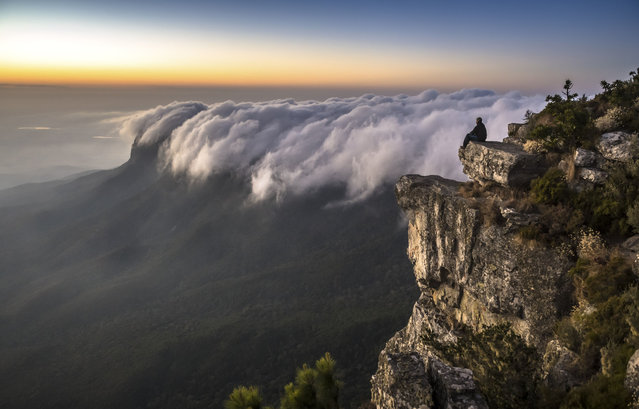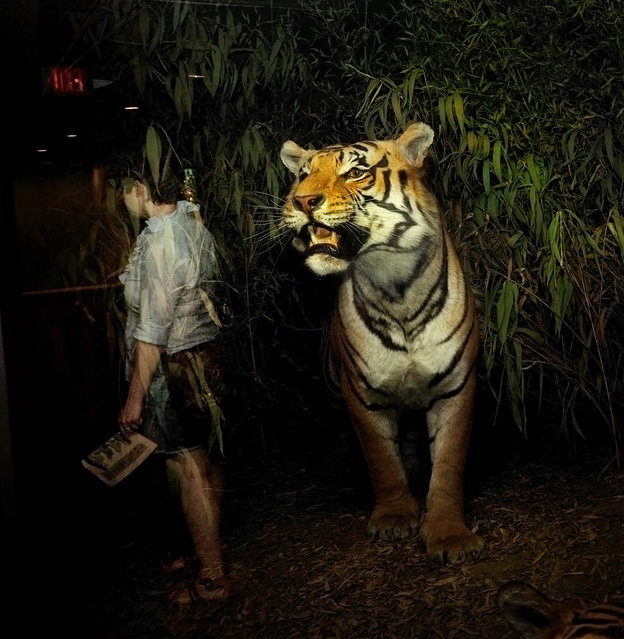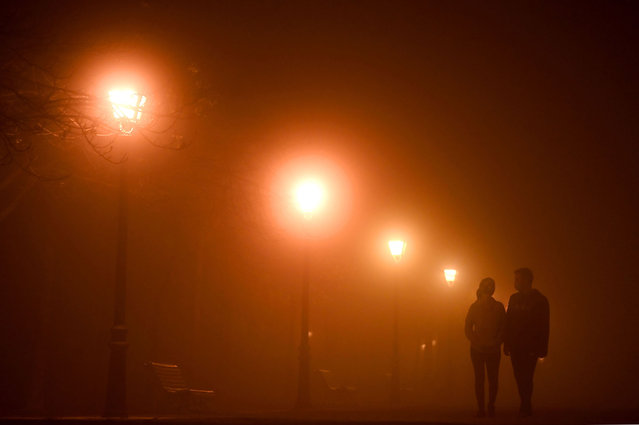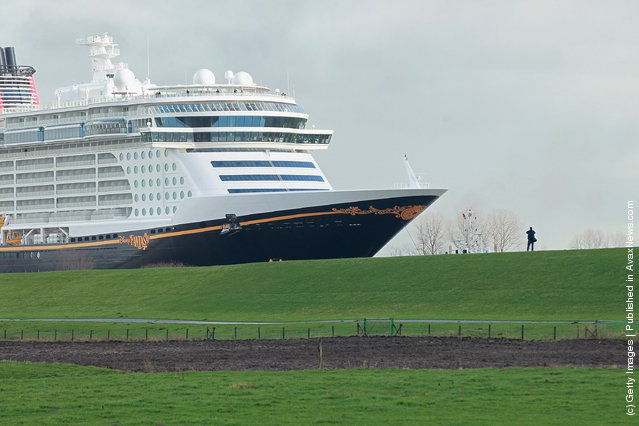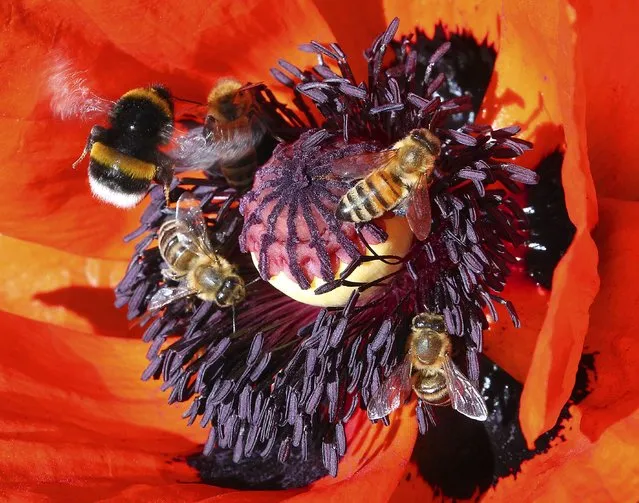
Honey bees and ground bumblebees fly with thick purple pollen pouches to the flower of a corn poppy, also called poppy or corn rose, to obtain nectar in Berlin, Germany, Tuesday, June 7, 2022. Bumblebees, which like bees belong to the stinging bee family, form so-called summer colonies that exist for only a few months. (Photo by Wolfgang Kumm/dpa via AP Photo)
08 Jun 2022 05:27:00,post received
0 comments


